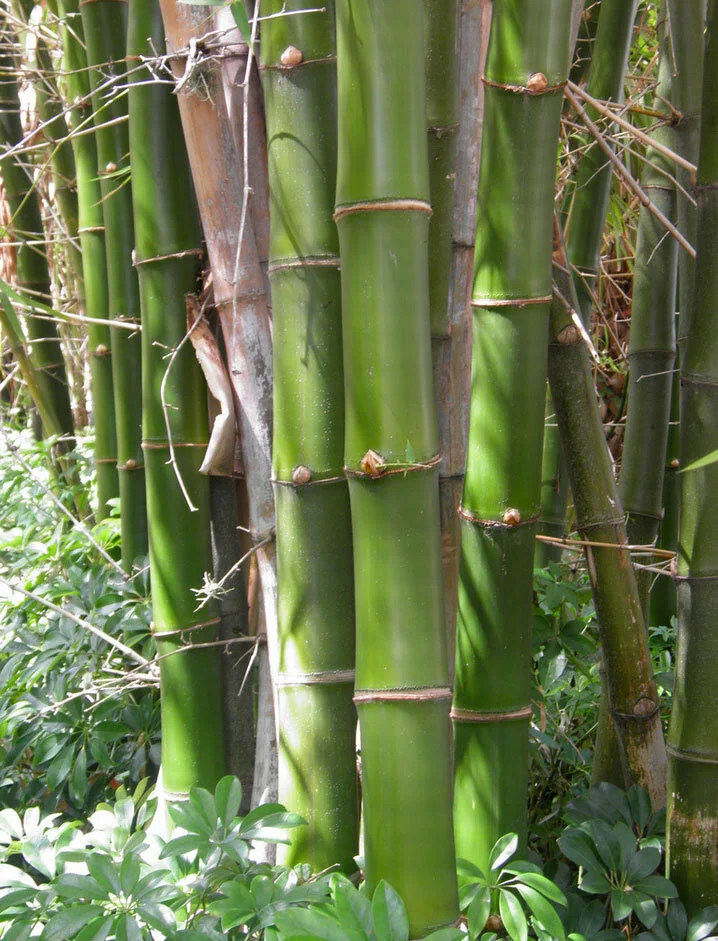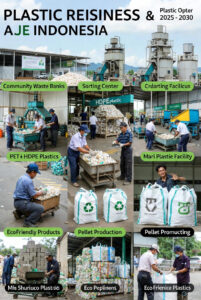
Bambusa vulgaris, commonly known as common bamboo or yellow bamboo, is one of the most widely distributed bamboo species in tropical and subtropical regions. Native to Asia but now naturalized worldwide, it has become a symbol of sustainability and versatility in modern industries.
Due to its fast growth, strength, and wide availability, Bambusa vulgaris is extensively used in construction, furniture, handicrafts, paper production, and environmental restoration.
Botanical Classification
- Scientific Name: Bambusa vulgaris
- Family: Poaceae (Gramineae)
- Subfamily: Bambusoideae
- Tribe: Bambuseae
- Common Names: Common bamboo, yellow bamboo, green bamboo, or golden bamboo
- Origin: Indigenous to tropical Asia, widely cultivated in Africa, Latin America, and the Pacific Islands
Morphological Characteristics
Bambusa vulgaris is a clumping (sympodial) bamboo species characterized by dense clumps and tall, thick-walled culms. It is one of the easiest bamboo species to identify and cultivate.
Key features include:
- Culms (stems):
Cylindrical, hollow, and thick-walled, typically 10–20 meters tall and 4–10 cm in diameter.
The culms can be green or yellow with green stripes, depending on the variety. - Branches:
Each node bears several branches, with one dominant branch and smaller side branches. - Leaves:
Narrow, lanceolate, about 15–25 cm long, providing dense foliage. - Growth pattern:
Non-invasive clumping type; new shoots emerge close to the mother clump. - Flowering:
Rare and irregular; most vegetative propagation is done through rhizome or culm cuttings.
Major Varieties of Bambusa vulgaris
- Bambusa vulgaris var. vulgaris (Green Bamboo)
- Bright green culms, common in construction and scaffolding.
- Fast-growing and widely available in tropical regions.
- Bambusa vulgaris var. striata (Yellow Bamboo or Golden Bamboo)
- Yellow culms with distinct green stripes.
- Popular for landscaping, decorative fences, and ornamental planting.
- Bambusa vulgaris var. vittata (Striped Bamboo)
- Striking golden-yellow culms with deep green streaks.
- Often used in ornamental gardens and architectural design.
Distribution and Habitat
Bambusa vulgaris thrives in warm, humid climates and grows naturally in tropical Asia, including India, Indonesia, Thailand, and the Philippines. It has been successfully introduced to Africa, South America, and the Caribbean due to its adaptability.
Preferred conditions:
- Temperature: 20–35°C
- Rainfall: 1200–2500 mm annually
- Soil: Well-drained loamy or sandy soils
- Altitude: Up to 1200 meters above sea level
It is commonly found along riverbanks, roadsides, and village settlements, making it one of the most accessible bamboo species for local use.
Economic and Industrial Uses
Bambusa vulgaris is renowned for its versatility and economic importance. Its culms and fibers are used in numerous industries:
1. Construction and Scaffolding
The strong culms are ideal for building rural houses, bridges, and scaffolding. Its flexibility and resilience make it suitable for earthquake-resistant structures in tropical countries.
2. Furniture and Handicrafts
The smooth texture and natural aesthetics of the culms make them ideal for making chairs, tables, baskets, mats, and traditional musical instruments.
3. Paper and Pulp Industry
Bambusa vulgaris provides excellent fiber for paper pulp production due to its long cellulose fibers.
4. Bioenergy
The culms and leaves can be processed into bamboo charcoal or briquettes, providing a renewable energy source.
5. Soil Erosion Control and Land Rehabilitation
The dense root system prevents soil erosion and improves land stability. It is often planted to reclaim degraded lands and prevent flooding along riverbanks.
6. Livestock Feed
Young shoots and leaves serve as fodder for livestock, especially in rural and agricultural regions.
Environmental Benefits
Bambusa vulgaris contributes significantly to environmental sustainability:
- Carbon Sequestration:
A mature bamboo stand absorbs large amounts of CO₂ and produces up to 35% more oxygen than an equivalent tree area. - Renewability:
Harvestable in 3–5 years without replanting, making it a renewable resource. - Erosion Prevention:
Its dense rhizome network strengthens soil and reduces runoff during heavy rainfall. - Biodiversity Support:
Provides habitat for birds, insects, and small mammals.
Propagation and Cultivation
Bambusa vulgaris is typically propagated through vegetative methods, as its seeds are rarely available.
Propagation techniques:
- Culm cutting: Sections with nodes are planted directly in moist soil.
- Rhizome division: Root sections with new shoots are transplanted.
- Offset planting: Mature culm bases are used for mass propagation.
It requires minimal maintenance, grows well in mixed agroforestry systems, and can be intercropped with fruit trees or other cash crops.
Challenges and Limitations
While Bambusa vulgaris is widely used, certain limitations exist:
- Not as strong as Dendrocalamus asper for heavy construction.
- Vulnerable to pests like powder-post beetles if untreated.
- Requires proper drying and treatment to prevent cracking or decay.
However, with proper management and preservation techniques, it remains one of the most economical and sustainable bamboo species worldwide.
Bambusa vulgaris stands as a cornerstone of sustainable development. Its fast growth, adaptability, and multiple applications make it an ideal choice for eco-friendly construction, green industries, and community-based enterprises.
From traditional architecture to modern innovation, this common bamboo continues to play an extraordinary role in building a sustainable future — one culm at a time.





